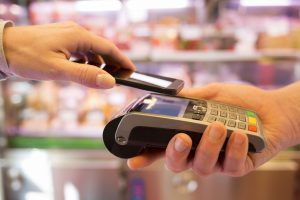When you go to pay at a restaurant in Jakarta, the cashier will often have several card reader machines from different banks. If one doesn’t work, you can try another until it goes through. If you have a card from outside Indonesia, there may be a moment of doubt as you wait to see if the transaction will be approved. This is because Indonesia’s national payment system has been quite fragmented, historically speaking.
It is an issue policymakers and banks are aware of and have been working to streamline and improve in recent years. Bank Indonesia recently rolled out a system called QRIS – Quick Response Code Indonesia Standard. Now when you pay at a merchant equipped with QRIS, instead of choosing between five different card readers you can simply use your phone to scan a QR code and the transaction is processed straight away from your account.
The standardization of digital payment systems at the national level is an important first step toward building a regional digital payment system in ASEAN. In March of this year, Singapore and Malaysia unveiled a cross-border QR payment system called NETS-DuitNow QR which was developed by the Monetary Authority of Singapore and Bank Negara Malaysia. Right now it is limited to merchant transactions, but by the end of the year will be ready for person-to-person transfers, including remittances. QR payment systems connecting Indonesia with Malaysia and Thailand are also in place, and a link with Singapore will be implemented soon.
This is part of a broader effort to deepen financial integration between ASEAN member states using digital technology. In 2022, an agreement was signed between Indonesia, Singapore, Malaysia, Thailand, and the Philippines to that effect. It was also a priority initiative pushed by Indonesia at the recent ASEAN Summit in May, and by the end of 2023, most of the signatories should have the system in place. Once that is done, the next step will be to connect the regional QR payment system with places outside of ASEAN.
Using QR codes makes it easier to pay for goods and services. It makes it easier for people who work or live abroad to send money back to their home countries, and for tourists from ASEAN countries to travel around the region and pay with less hassle. This is not insignificant. Almost 3 million Malaysian tourists visited Indonesia in 2019, and a QR system that lets them pay in their own currency at a good exchange rate is certainly an inducement to visit more often and spend more money.
But how much of a game-changer is this really? I think there may be some belief that by building a home-grown digital payment network, ASEAN states will be able to lessen their dependence on the U.S. dollar. That’s true to an extent. Payments made with credit and debit cards, even those issued by local banks, are often processed through American companies like Visa who leverage their market power to impose high fees on merchants and cardholders. The ASEAN QR code system involves central banks in the region working directly with one another. Fees and exchange rates can be determined by mutual agreement between the central banks themselves, rather than through American-owned third parties, making transactions more efficient and less costly.
What it does not do is fundamentally change the role the U.S. dollar plays in ASEAN economies or the regional financial system. These very same central banks will continue to keep billions of U.S. dollars in reserves on their balance sheets and be impacted by changes in U.S. interest rates and monetary policy in much the same way as before the development of the regional QR system.
Using QR codes to pay for goods and services and to transfer money is a good thing. It improves the efficiency of commercial exchange and is a fine example of how digital technology can be leveraged to reduce transaction costs. That central banks in the region are working together to design and build this system is an encouraging sign for fans of ASEAN regionalism. But unless and until ASEAN countries are using these QR code systems to pay for oil imports, it is unlikely to portend a major shift in the dollar’s dominant role in the regional or global financial system.

































